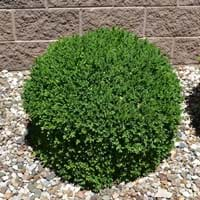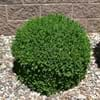Life Span
Perennial
Annual and Perennial
Type
Broadleaf Evergreen
Tender Perennial
Origin
Hybrid origin
South Africa
Types
Bigleaf hydrangea, Hortensia, Smooth hydrangea, Oakleaf hydrangea, Annabelle
Osteospermum acanthospermum, Osteospermum amplectens, Osteospermum burttianum
Habitat
Forest edges, Hillside, Woods
Coastal Regions, Sandy areas, Terrestrial
USDA Hardiness Zone
6-9
10-11
AHS Heat Zone
Not Available
Not Available
Sunset Zone
21,22
8, 9, 12, 13, 14, 15, 16, 17, 18, 19, 20, 21, 22, 23, 24
Habit
Oval/Rounded
Clump-Forming
Flower Color
Light Yellow
White, Purple, Blue Violet
Flower Color Modifier
Bicolor
Bicolor
Fruit Color
Not Available
Not Available
Leaf Color in Spring
Green
Green
Leaf Color in Summer
Green
Green
Leaf Color in Fall
Green
Green, Blue Green
Leaf Color in Winter
Yellow green, Bronze
Light Green
Leaf Shape
Oblovate
Irregular
Plant Season
Spring, Summer, Fall, Winter
Spring, Summer, Fall
Sunlight
Full Sun, Partial Sun
Full Sun, Partial Sun
Type of Soil
Loam, Sand
Loam
The pH of Soil
Acidic, Neutral
Neutral
Soil Drainage
Well drained
Well drained
Bloom Time
Late Spring
Late Spring, Early Summer, Summer, Late Summer, Early Fall, Fall
Tolerances
Not Available
Drought
Where to Plant?
Container, Ground
Container
How to Plant?
Seedlings, Stem Planting
Seedlings, Stem Cutting
Plant Maintenance
Medium
Medium
Watering Requirements
Not Available
Do Not over Water, Keep ground moist
In Summer
Average Water
Lots of watering
In Spring
Moderate
Moderate
In Winter
Average Water
Average Water
Soil pH
Acidic, Neutral
Neutral
Soil Type
Loam, Sand
Loam
Soil Drainage Capacity
Well drained
Well drained
Sun Exposure
Full Sun, Partial Sun
Full Sun, Partial Sun
Pruning
Remove damaged leaves, Remove dead branches, Remove dead leaves
Remove damaged leaves, Remove dead branches, Remove dead leaves
Fertilizers
All-Purpose Liquid Fertilizer
All-Purpose Liquid Fertilizer
Pests and Diseases
Red blotch
Red blotch
Plant Tolerance
Not Available
Drought
Flowers
Insignificant
Showy
Flower Petal Number
Single
Single
Foliage Texture
Fine
Medium
Foliage Sheen
Glossy
Not Available
Attracts
Bees, Flies
Bees, Birds, Butterflies
Allergy
Chest tightness, Diarrhea, Dizziness, Nausea, Vomiting
Not Available
Aesthetic Uses
Not Available
Beautification, Showy Purposes
Beauty Benefits
Not Available
Not Available
Edible Uses
Not Available
No
Environmental Uses
Air purification
Air purification
Medicinal Uses
Fever, Kidney problems, Urinary tract problems
Not Applicable
Part of Plant Used
Flowers, Root
Flowers
Other Uses
Not Available
Used as Ornamental plant
Used As Indoor Plant
Not Available
No
Used As Outdoor Plant
Yes
Yes
Garden Design
Container, Edging, Foundation, Hedges, Rock Garden, Wall, Topiary, Bonsai, Espalier
Bedding Plant, Container, Cutflower, Foundation, Groundcover, Hanging Basket, Mixed Border, Rock Garden / Wall
Botanical Name
BUXUS microphylla
OSTEOSPERMUM fruticosum
Common Name
Boxwood, Littleleaf Boxwood
Shrubby Daisybush, Trailing African Daisy
In Hindi
Hydrangea
Blue Eyed Daisy Plant
In German
Hortensie
Blue Eyed Daisy Pflanze
In French
Hortensia
Blue Eyed Daisy Plante
In Spanish
Hortensia
Planta observada azul de la margarita
In Greek
υδραγεία
Μπλε Eyed Daisy Φυτών
In Portuguese
Hortênsia
Planta da margarida de olhos azuis
In Polish
Hortensja
Blue Eyed Daisy roślin
In Latin
Hibiscus
Daisy Blue Eyed Planta
Phylum
Not Available
Magnoliophyta
Class
Not Available
Magnoliopsida
Order
Not Available
Asterales
Family
Buxaceae
Asteraceae
Genus
Not Available
Osteospermum
Clade
Not Available
Angiosperms, Asterids, Eudicots
Tribe
Not Available
Calenduleae
Subfamily
Not Available
Asteroideae
Number of Species
Not Available
Properties of Boxwood and Blue Eyed Daisy Plant
Wondering what are the properties of Boxwood and Blue Eyed Daisy Plant? We provide you with everything About Boxwood and Blue Eyed Daisy Plant. Boxwood doesn't have thorns and Blue Eyed Daisy Plant doesn't have thorns. Also Boxwood does not have fragrant flowers. Boxwood has allergic reactions like Chest tightness, Diarrhea, Dizziness, Nausea and Vomiting and Blue Eyed Daisy Plant has allergic reactions like Chest tightness, Diarrhea, Dizziness, Nausea and Vomiting. Compare all the properties and characteristics of these two plants. Find out which of these plant can be used as indoor plant. If you are interested to decorate your house and garden, find out aesthetic uses, compare them and select the plant which will beautify your surrounding. Along with beautification, try comparing medicinal and edible uses of Boxwood and Blue Eyed Daisy Plant and you can choose the plant having best and most benefits.
Season and Care of Boxwood and Blue Eyed Daisy Plant
Season and care of Boxwood and Blue Eyed Daisy Plant is important to know. While considering everything about Boxwood and Blue Eyed Daisy Plant Care, growing season is an essential factor. Boxwood season is Spring, Summer, Fall and Winter and Blue Eyed Daisy Plant season is Spring, Summer, Fall and Winter. The type of soil for Boxwood is Loam, Sand and for Blue Eyed Daisy Plant is Loam while the PH of soil for Boxwood is Acidic, Neutral and for Blue Eyed Daisy Plant is Neutral.
Boxwood and Blue Eyed Daisy Plant Physical Information
Boxwood and Blue Eyed Daisy Plant physical information is very important for comparison. Boxwood height is 75.00 cm and width 120.00 cm whereas Blue Eyed Daisy Plant height is 36.00 cm and width 51.00 cm. The color specification of Boxwood and Blue Eyed Daisy Plant are as follows:
Boxwood flower color: Light Yellow
Boxwood leaf color: Green
Blue Eyed Daisy Plant flower color: White, Purple and Blue Violet
- Blue Eyed Daisy Plant leaf color: Green
Care of Boxwood and Blue Eyed Daisy Plant
Care of Boxwood and Blue Eyed Daisy Plant include pruning, fertilizers, watering etc. Boxwood pruning is done Remove damaged leaves, Remove dead branches and Remove dead leaves and Blue Eyed Daisy Plant pruning is done Remove damaged leaves, Remove dead branches and Remove dead leaves. In summer Boxwood needs Average Water and in winter, it needs Average Water. Whereas, in summer Blue Eyed Daisy Plant needs Lots of watering and in winter, it needs Average Water.



